Kubernetes for the Absolute Beginners - Hands-on Tutorial
Kubernetes on the Cloud
Kubernetes on AWS EKS
In this lesson, we will guide you through creating an Amazon Elastic Kubernetes Service (EKS) cluster—Amazon’s managed Kubernetes solution. Before proceeding, ensure you have met the prerequisites listed below:
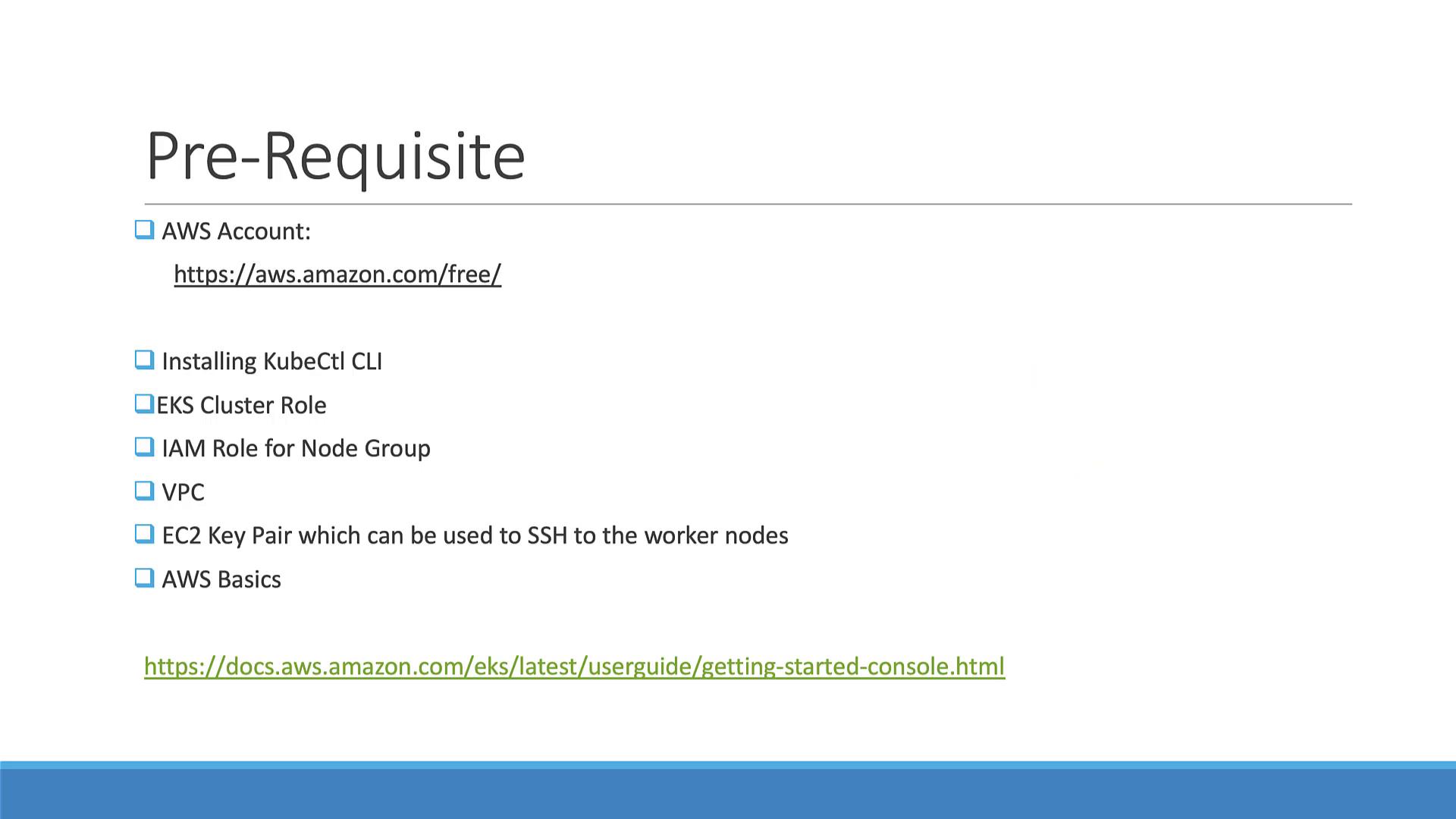
Prerequisites
• An active AWS account (new users can explore free access via the AWS Free Tier).
• Installation of the kubectl utility.
• Basic AWS knowledge to configure a cluster role for EKS, create an IAM role for the node group, set up a VPC, and generate an EC2 key pair (the key pair is helpful for SSH access if needed).
• The AWS CLI installed and configured with your credentials.
Installing and Configuring the AWS CLI
First, verify that the AWS CLI is installed by running:
aws --version
If the AWS CLI is missing, install it using one of the following methods:
On macOS:
curl "https://awscli.amazonaws.com/AWSCLIV2.pkg" -o "AWSCLIV2.pkg"
sudo installer -pkg AWSCLIV2.pkg -target /
Using pip3:
pip3 install awscli --upgrade --user
After installation, ensure that the AWS CLI is properly configured with your credentials.
Setting Up kubectl
Since kubectl is already installed, you can verify its version and update your PATH if necessary. First, move the binary to a directory in your home and update your PATH:
mkdir -p $HOME/bin && mv ./kubectl $HOME/bin/ && export PATH=$PATH:$HOME/bin
(Optional) To permanently add $HOME/bin to your PATH, append the following line to your shell initialization file (e.g., ~/.bash_profile):
echo 'export PATH=$PATH:$HOME/bin' >> ~/.bash_profile
Finally, check the kubectl client version to ensure it is ready:
kubectl version --short --client
Creating the EKS Cluster
Before creating your cluster, confirm you have set up the required IAM role for your EKS cluster and prepared a VPC (or you can choose the default VPC). Follow these steps:
Log in to your AWS account and navigate to Services.
Search for EKS and select the service.
Click Create cluster and configure the cluster:
Cluster Configuration:
Provide a name for your cluster (e.g.,example-voting-app) and keep the default Kubernetes version (e.g., 1.16). Select the appropriate IAM role for your cluster.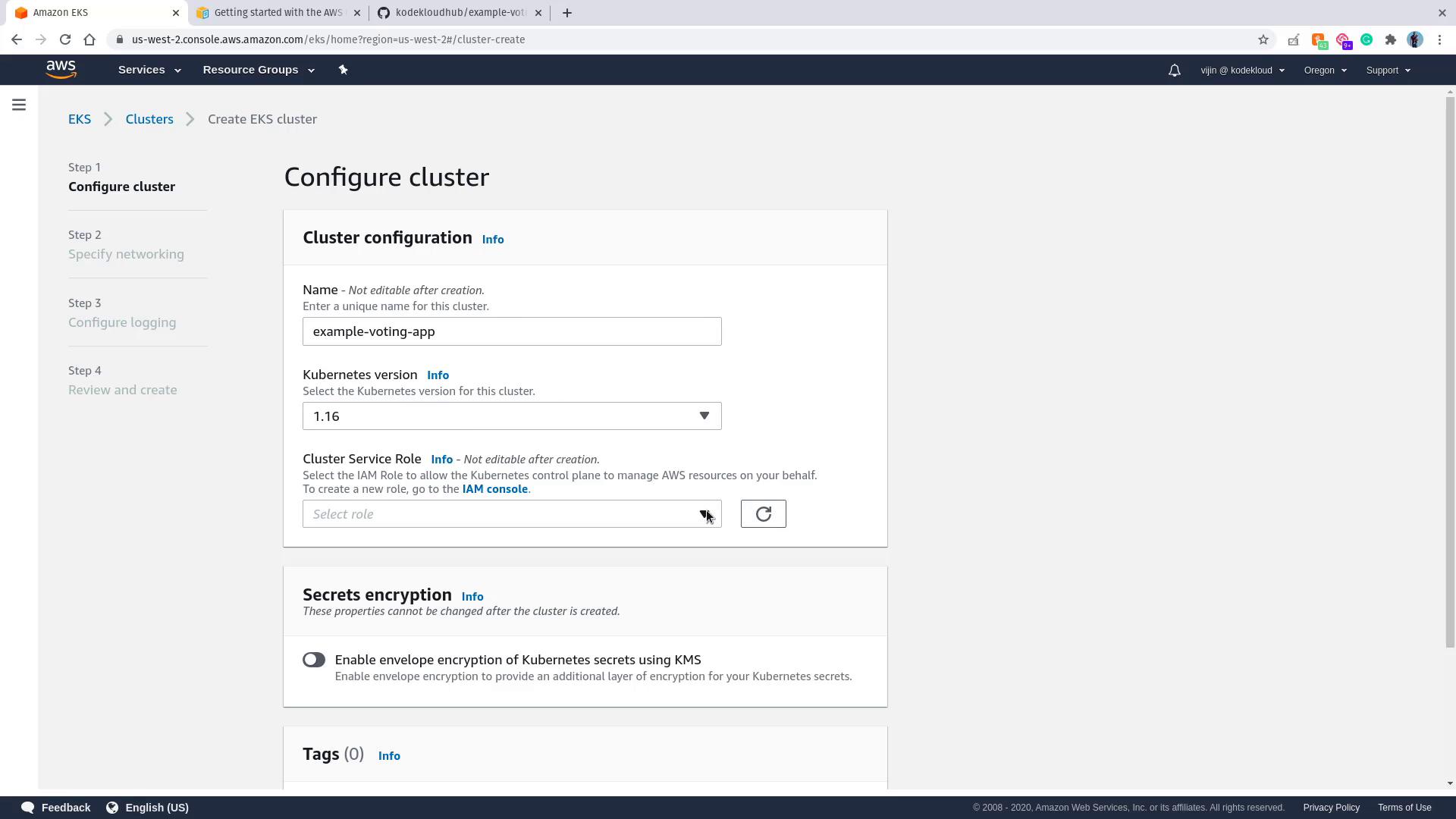
Click Next.
Networking Configuration:
Choose the default VPC in your region (e.g., US West 2 (Oregon 2)) and select all available subnets.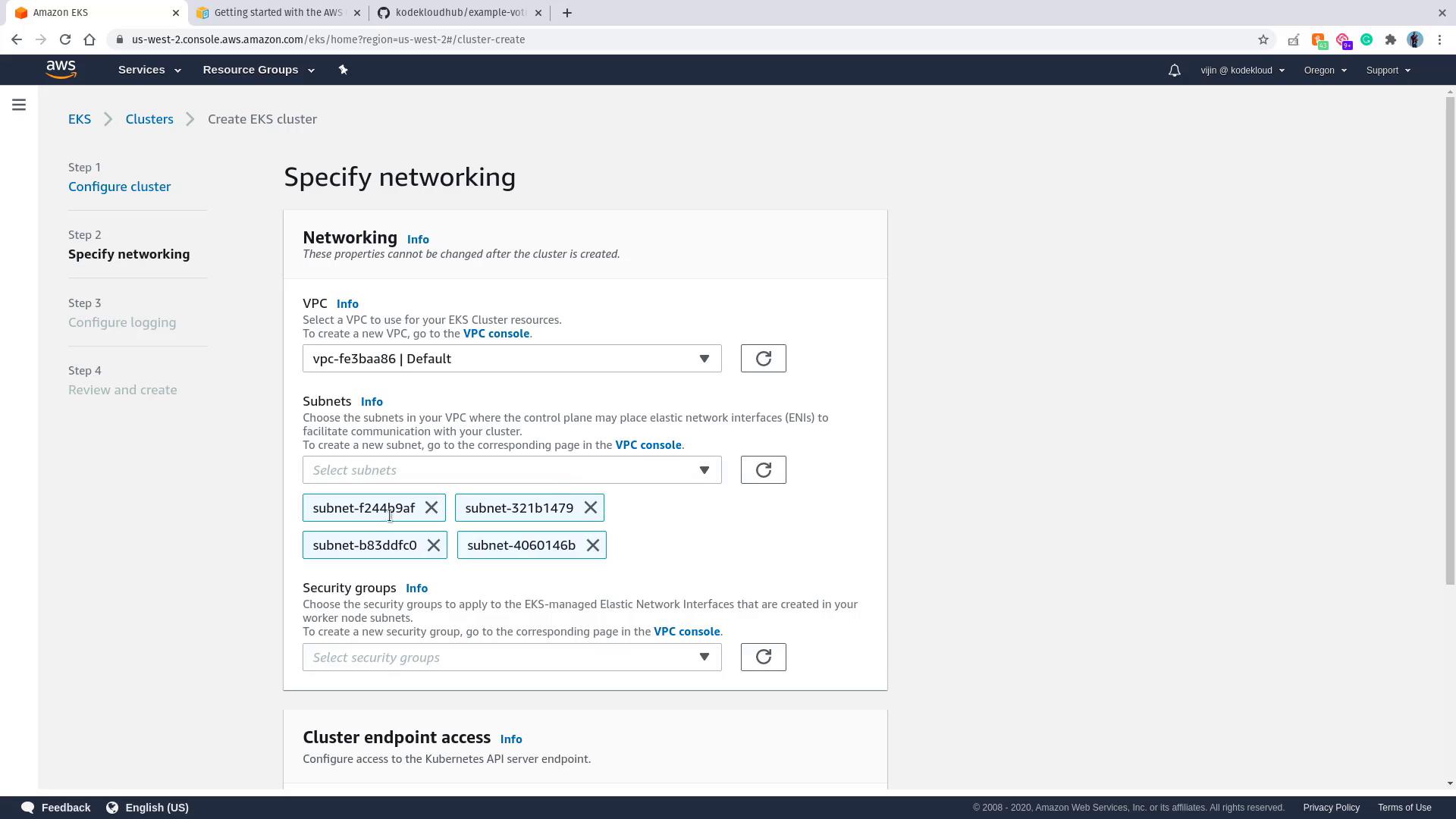
Continue through the review pages by clicking Next, then click Create. Creation may take up to 10 minutes.
When the cluster status becomes active (checkmark visible), you can proceed to add a node group.
Adding a Node Group
A node group represents a set of worker nodes that run your application workloads. To add a node group, follow these steps:
In your EKS cluster's Compute section, click Add node group.
Name the node group (e.g.,
demo-workers) and select the previously created EKS node IAM role.Choose the default subnets (or select those that correspond with your network setup).

Optionally, select an EC2 key pair if you wish to enable SSH access to the worker nodes.
In the Compute Configuration section, review settings like AMI type, instance type, and disk size. Default values are generally acceptable.
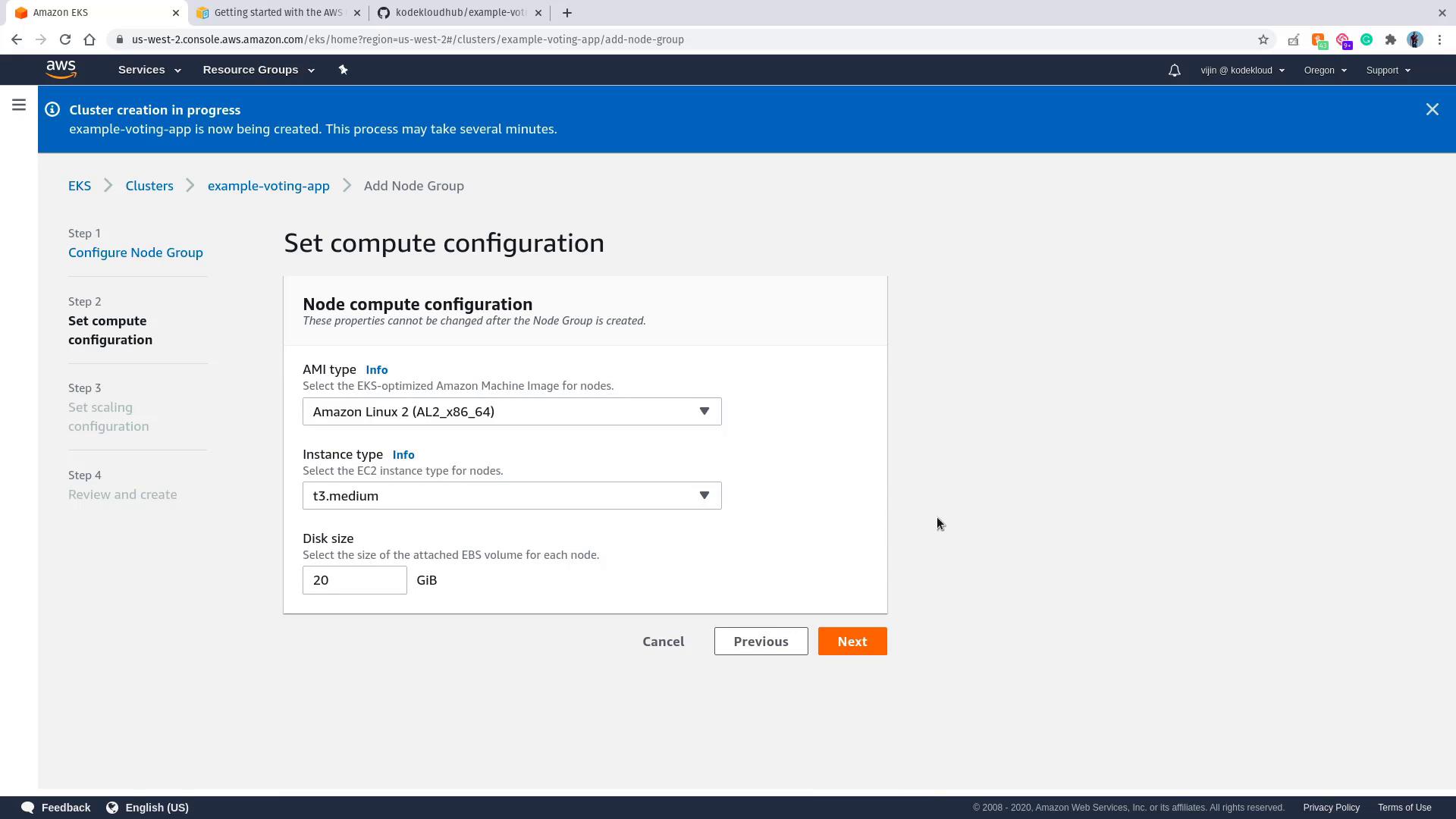
Set the auto scaling parameters (minimum, maximum, and desired number of nodes), review your configuration, and click Create. Provisioning may take several minutes.
When the node group status is active and the worker nodes are visible (as EC2 instances), your cluster is now fully set up.
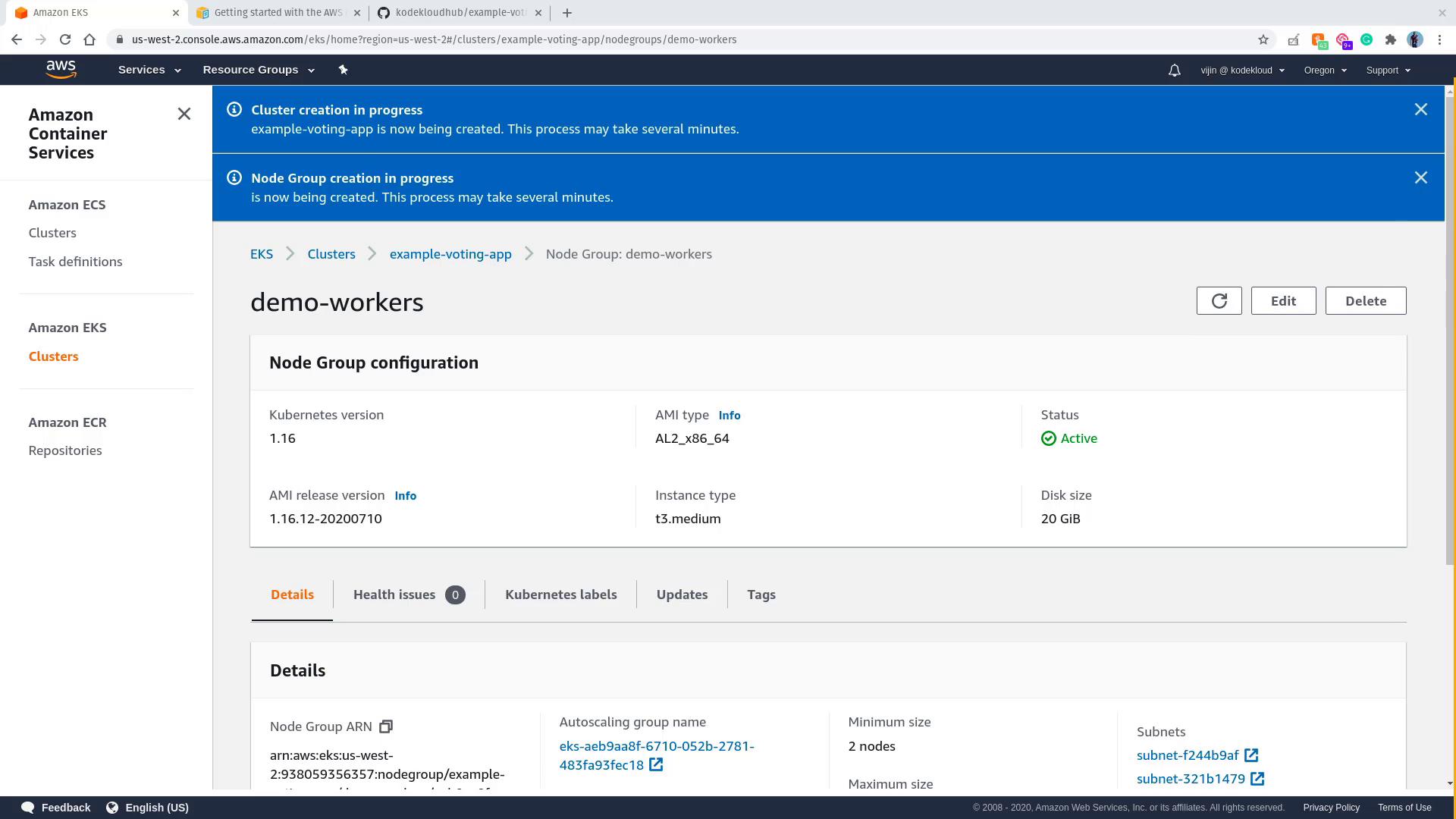
Configuring kubectl for the EKS Cluster
Your local kubectl might be configured for a different cluster (e.g., Minikube). To switch to your new AWS EKS cluster, update your kubeconfig file using the AWS CLI. Replace the region and cluster name as needed:
aws eks --region us-west-2 update-kubeconfig --name example-voting-app
This command adds a new context to your kubeconfig file (typically located at ~/.kube/config). Test your configuration by listing the nodes:
kubectl get nodes
You should see your worker nodes listed. Keep in mind that in managed Kubernetes services like EKS, the master nodes are maintained by AWS and are neither accessible for SSH nor intended for running workloads.
Deploying the Voting Application
With your EKS cluster ready and kubectl configured, it’s time to deploy the sample voting application. Start by cloning the GitHub repository:
# git clone https://github.com/kODEKLOUDHUB/example-voting-app.git
Cloning into 'example-voting-app'...
remote: Enumerating objects: 12, done.
remote: Counting objects: 100% (12/12), done.
remote: Compressing objects: 100% (7/7), done.
remote: Total 872 (delta 5), reused 11 (delta 5), pack-reused 860
Receiving objects: 100% (872/872), 958.67 KiB | 1.25 MiB/s, done.
Resolving deltas: 100% (307/307), done.
# cd example-voting-app/k8s-specifications
Inside the k8s-specifications directory, you will find several YAML files defining deployments and services:
postgres-deploy.yaml redis-deploy.yaml voting-app-deploy.yaml
postgres-service.yaml result-app-deploy.yaml voting-app-service.yaml
worker-app-deploy.yaml
Deploy the Kubernetes resources in the order outlined below:
Voting App Deployment and Service:
kubectl create -f voting-app-deploy.yaml kubectl create -f voting-app-service.yamlRedis Deployment and Service:
kubectl create -f redis-deploy.yaml kubectl create -f redis-service.yamlPostgreSQL Deployment and Service:
kubectl create -f postgres-deploy.yaml kubectl create -f postgres-service.yamlWorker and Results App Deployments and Services:
kubectl create -f worker-app-deploy.yaml kubectl create -f result-app-deploy.yaml
After deploying these resources, verify their status by running:
kubectl get deployments,svc
A typical output might resemble:
NAME READY UP-TO-DATE AVAILABLE AGE
deployment.apps/postgres-deploy 1/1 1 1 26s
deployment.apps/redis-deploy 1/1 1 1 34s
deployment.apps/result-app-deploy 1/1 1 1 13s
deployment.apps/voting-app-deploy 1/1 1 1 43s
deployment.apps/worker-app-deploy 0/1 1 0 18s
NAME TYPE CLUSTER-IP PORT(S) AGE
service/db ClusterIP 10.100.250.53 <none> 22s
service/kubernetes ClusterIP 10.100.0.1 443/TCP 22m
service/redis ClusterIP 10.100.46.144 443/TCP 30s
service/result-service LoadBalancer 10.100.222.36 <port-info> 9s
service/voting-service LoadBalancer 10.100.173.35 <port-info> 39s
Once all deployments (including the worker application) have the desired number of ready pods, access the application using the Load Balancer URLs provided for the voting-service and result-service. Open the voting service URL in your web browser to view the voting interface.
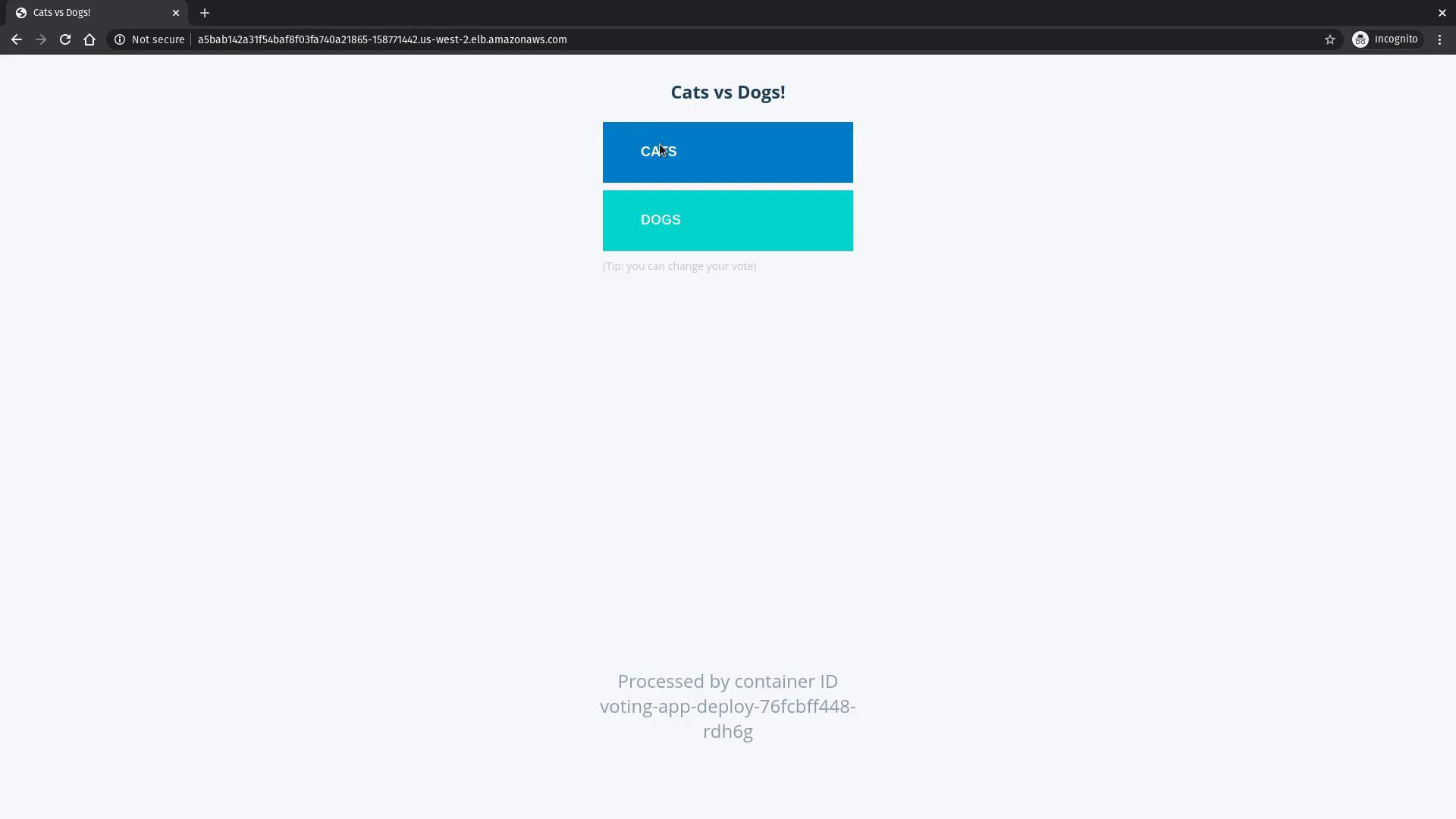
Vote for your preferred option and verify that the results update accordingly.
Cleanup
Cleanup Reminder
After reviewing the application, ensure that you delete the EKS cluster and any deployed resources to avoid unnecessary charges.
Thank you for following this lesson. Happy clustering!
Watch Video
Watch video content